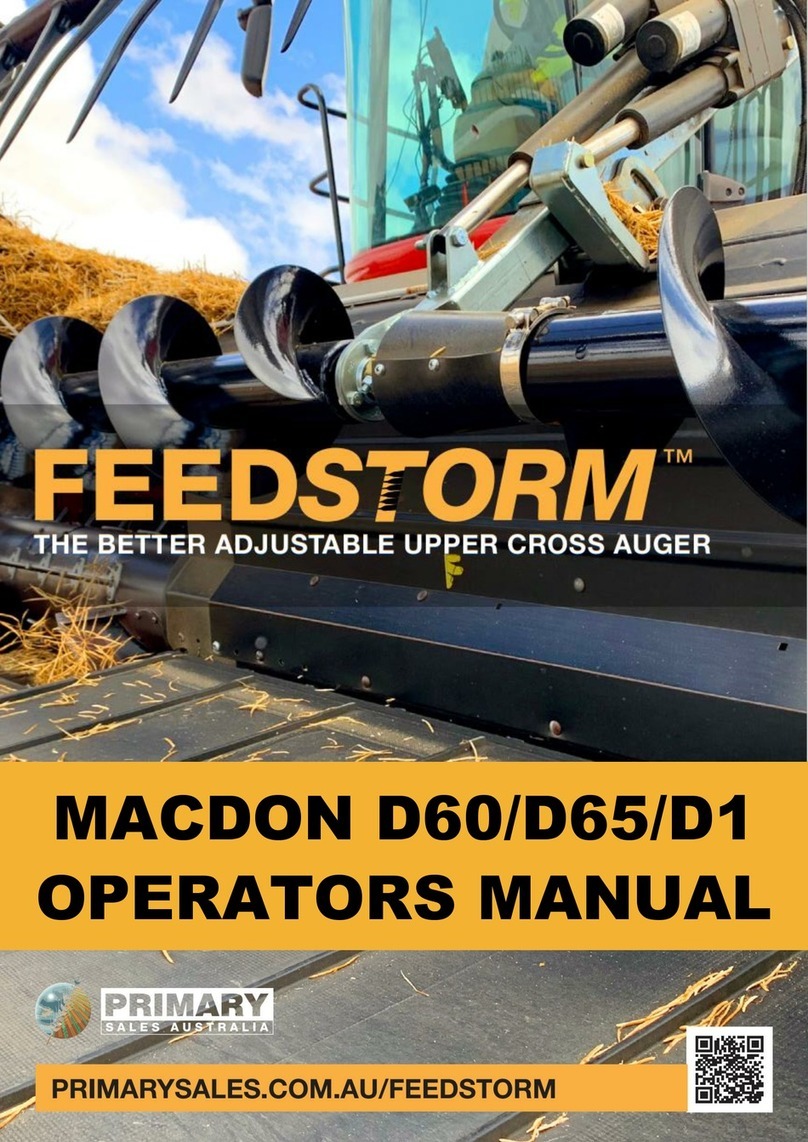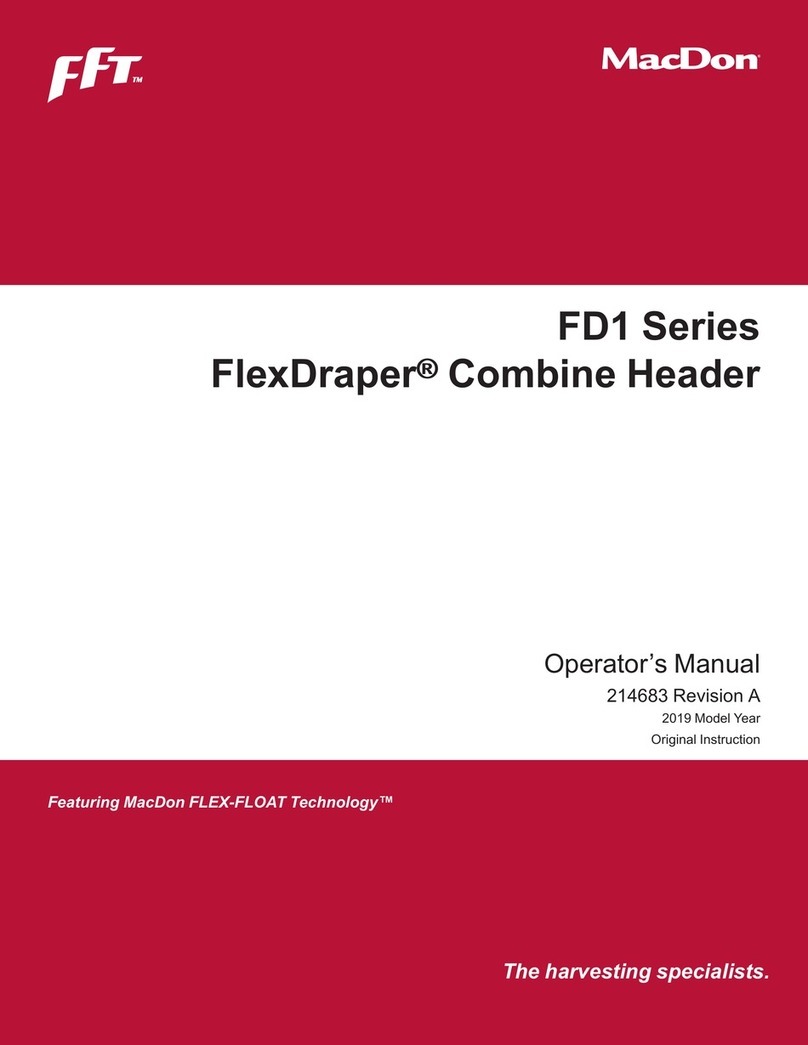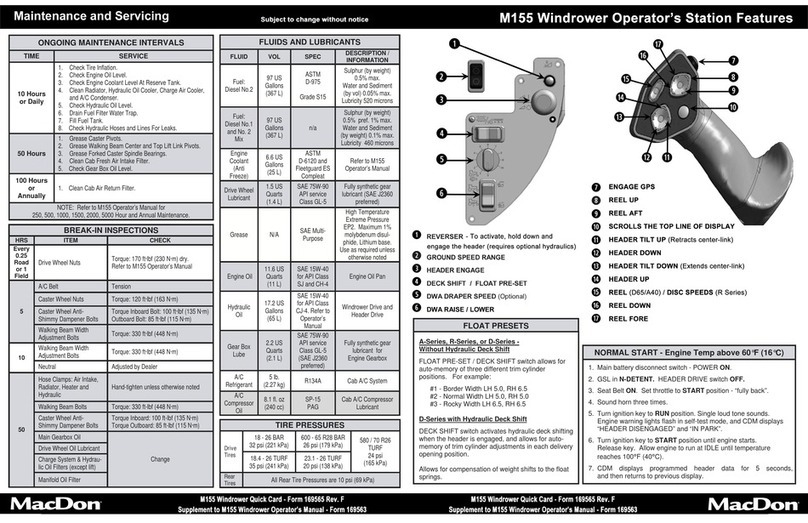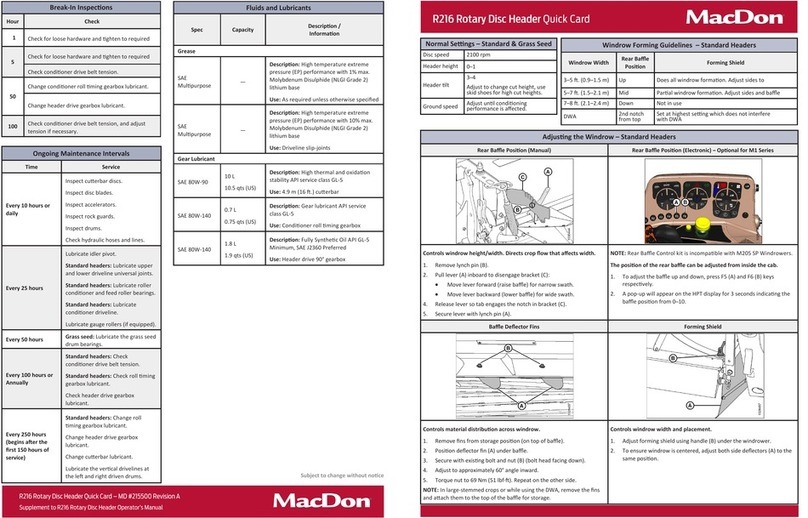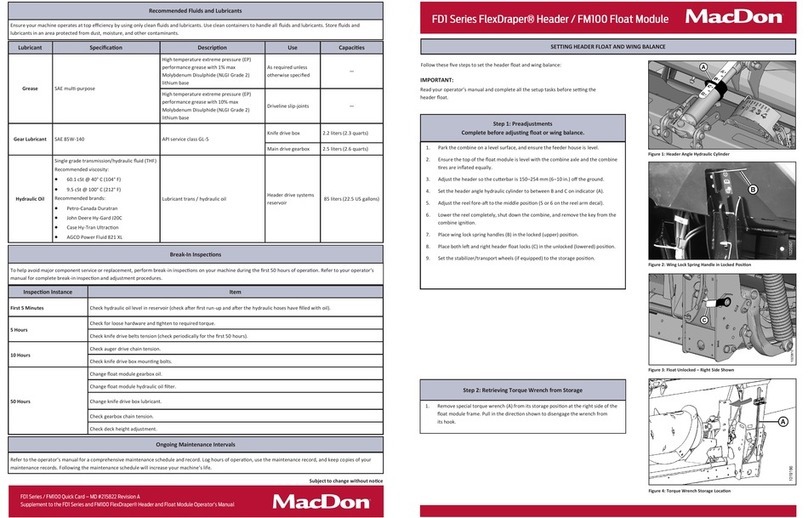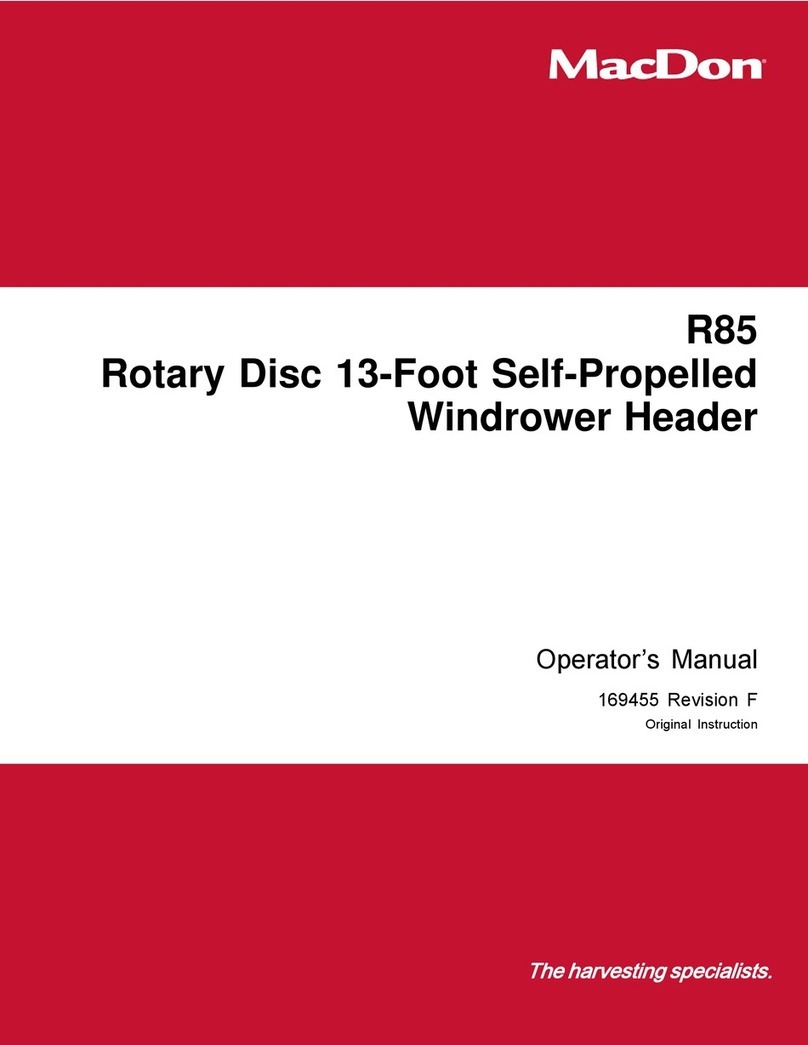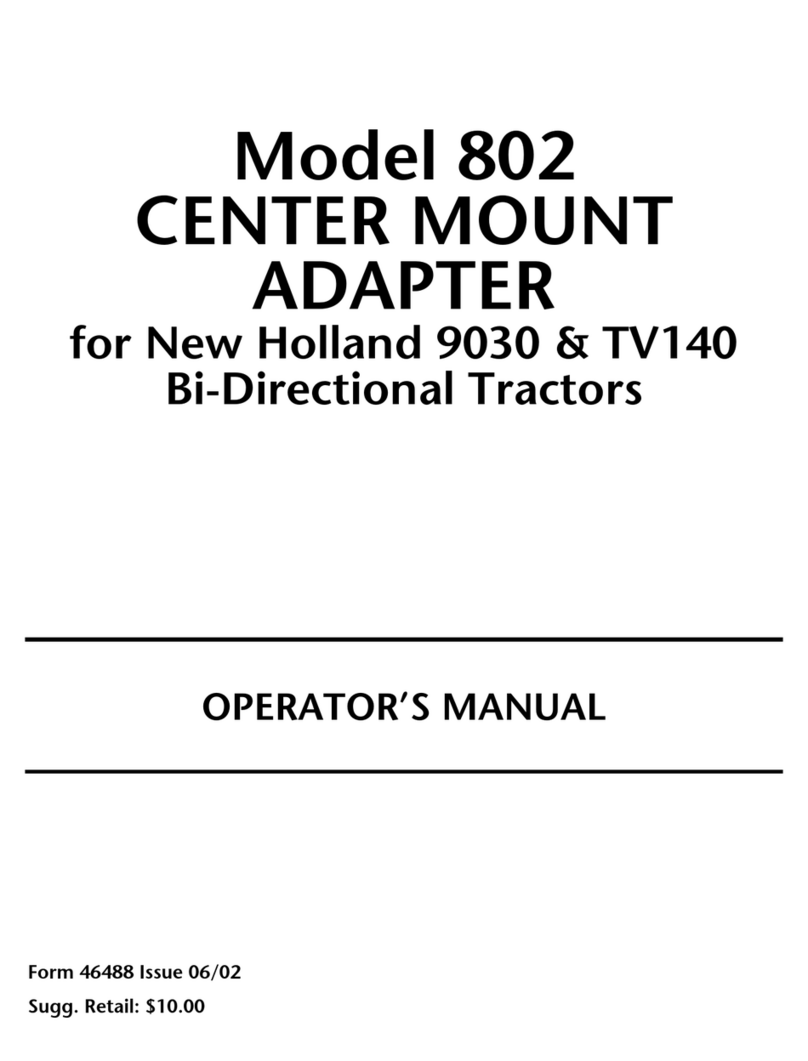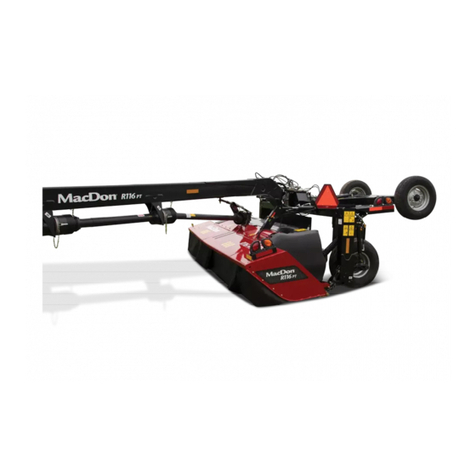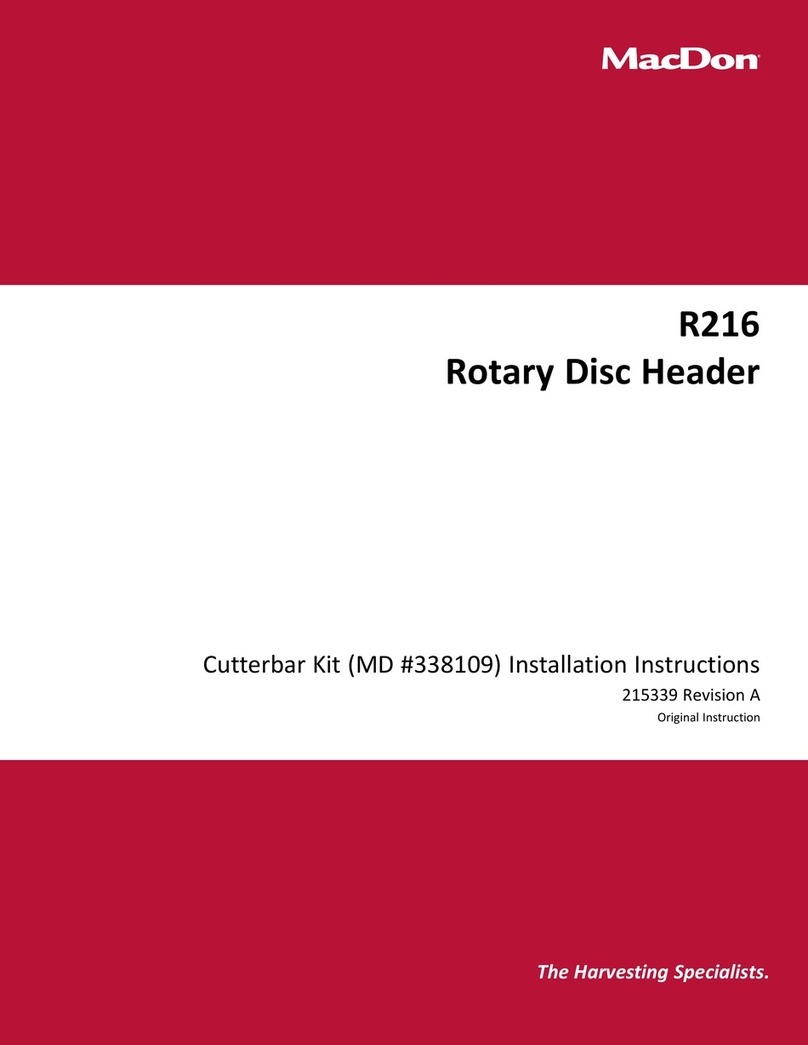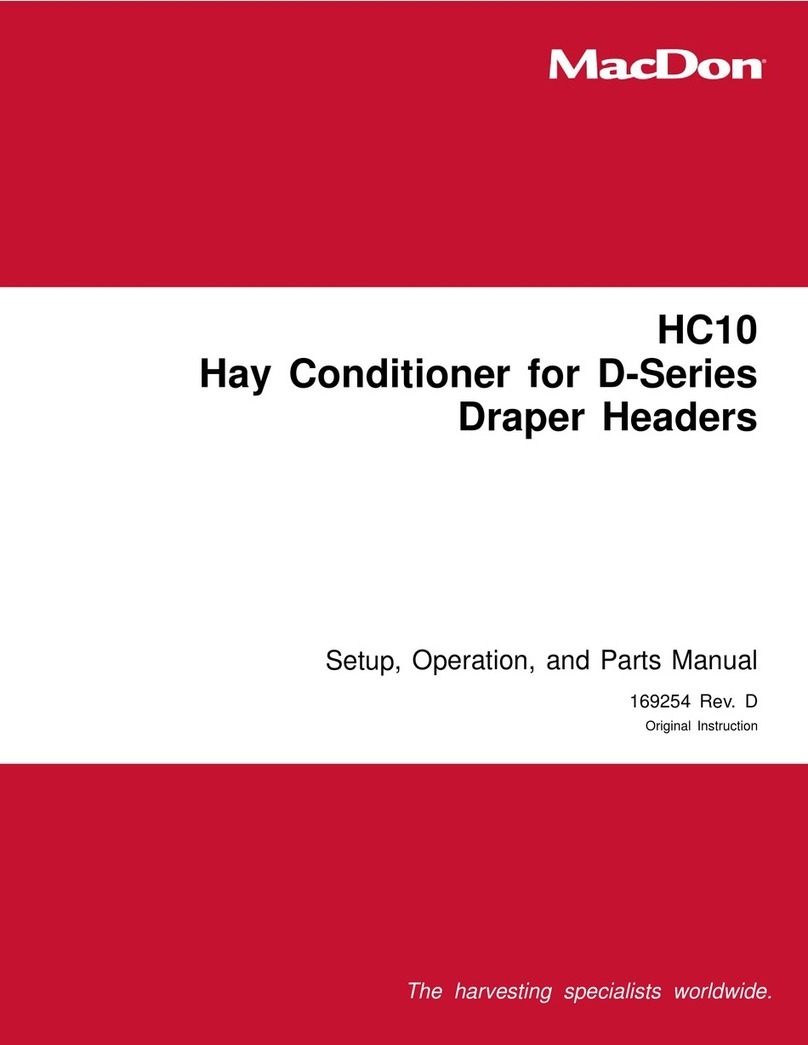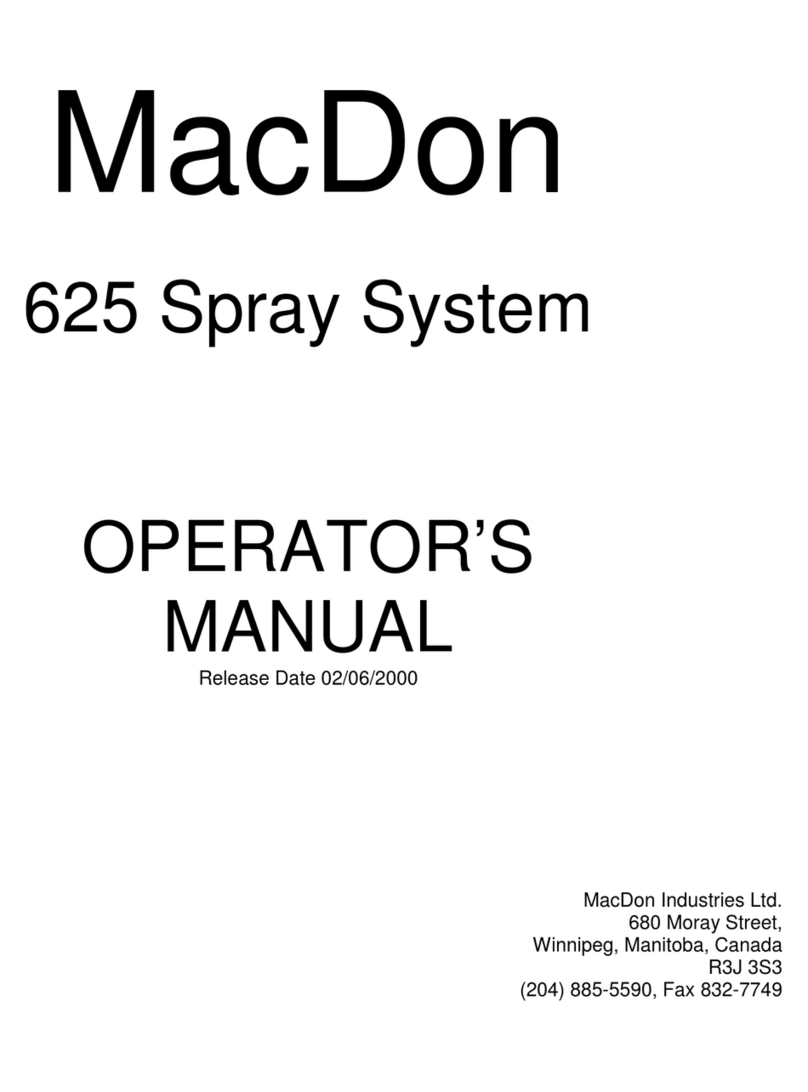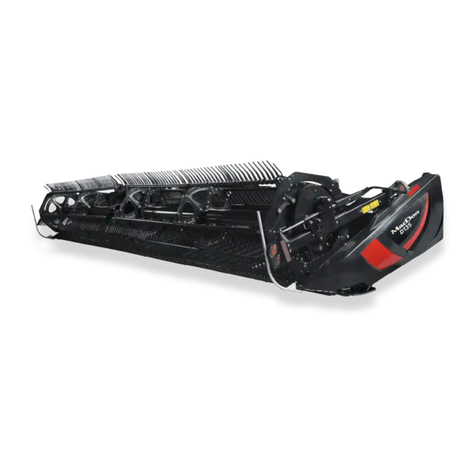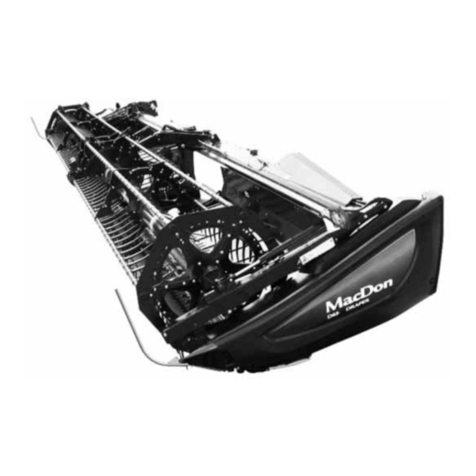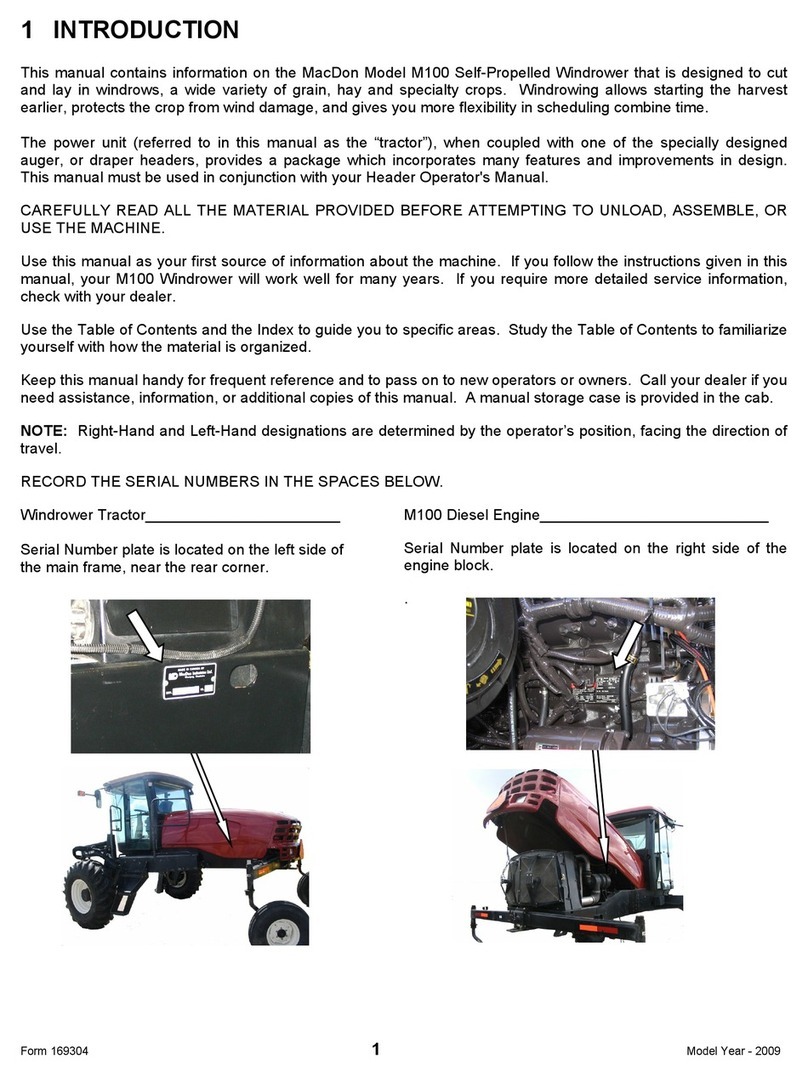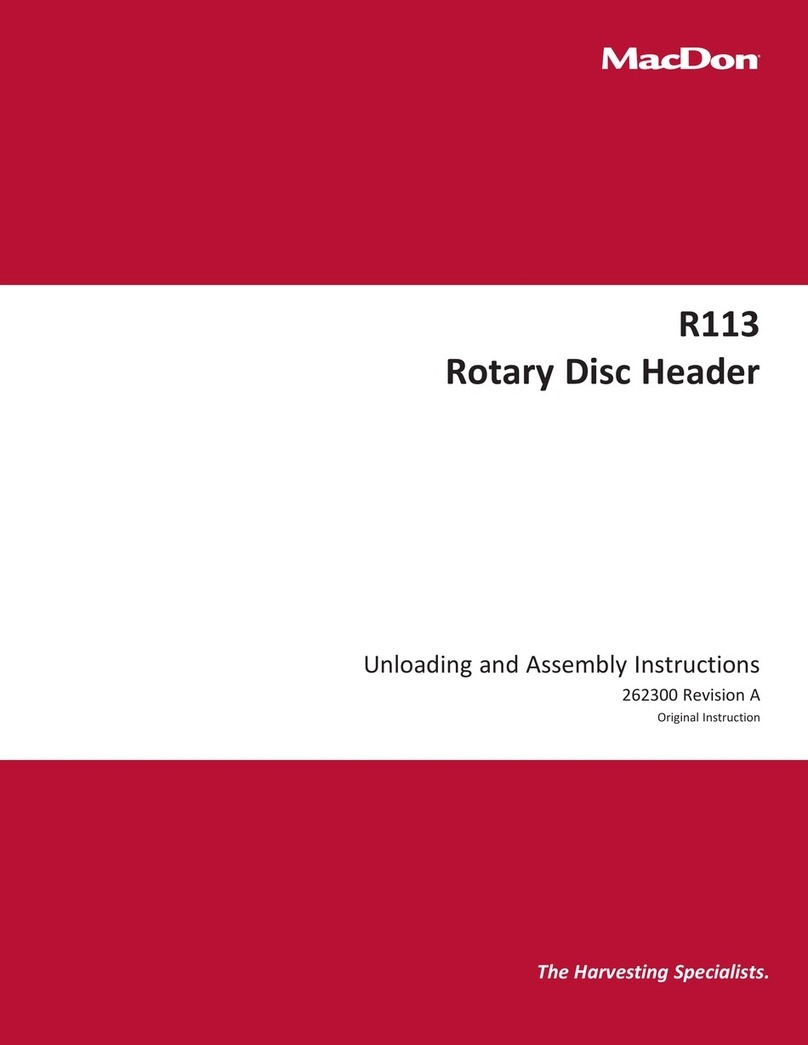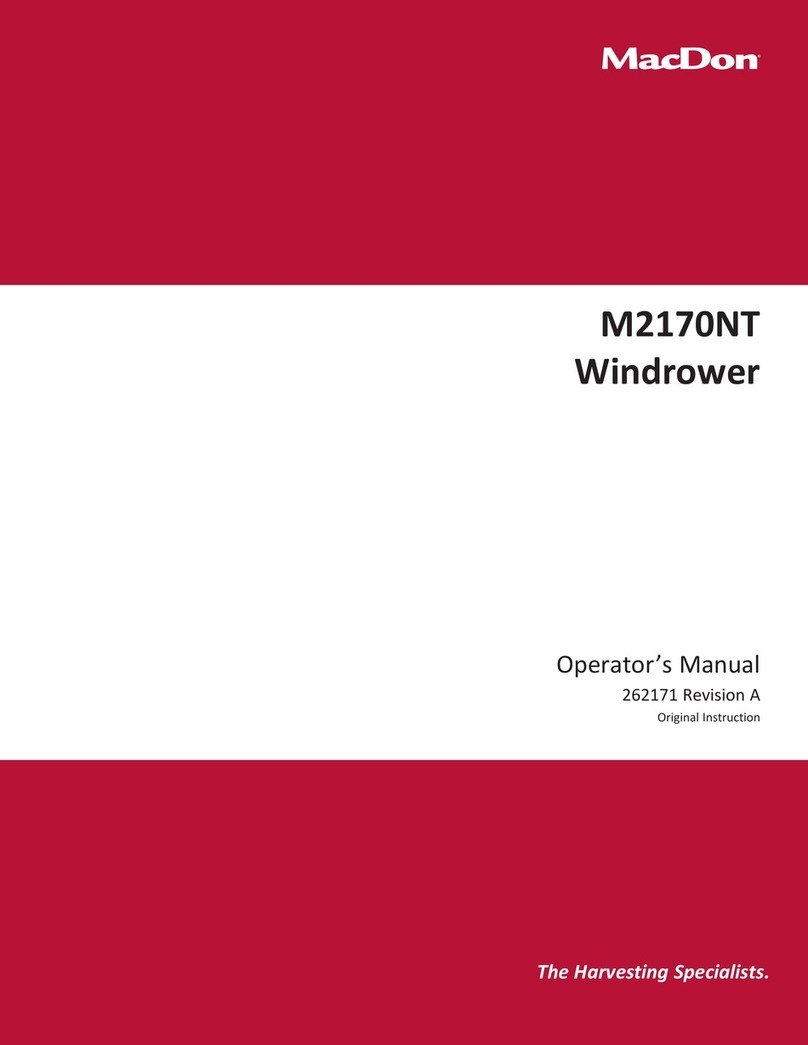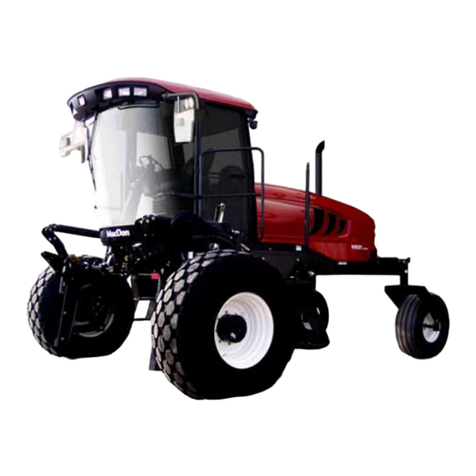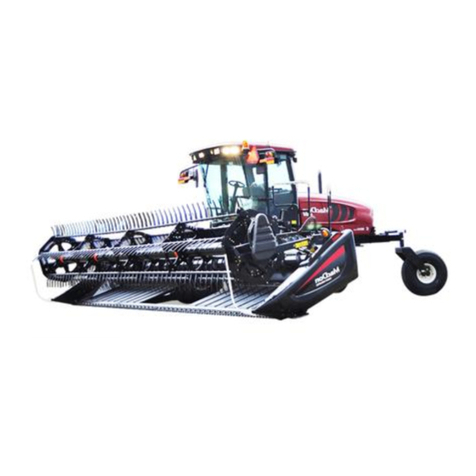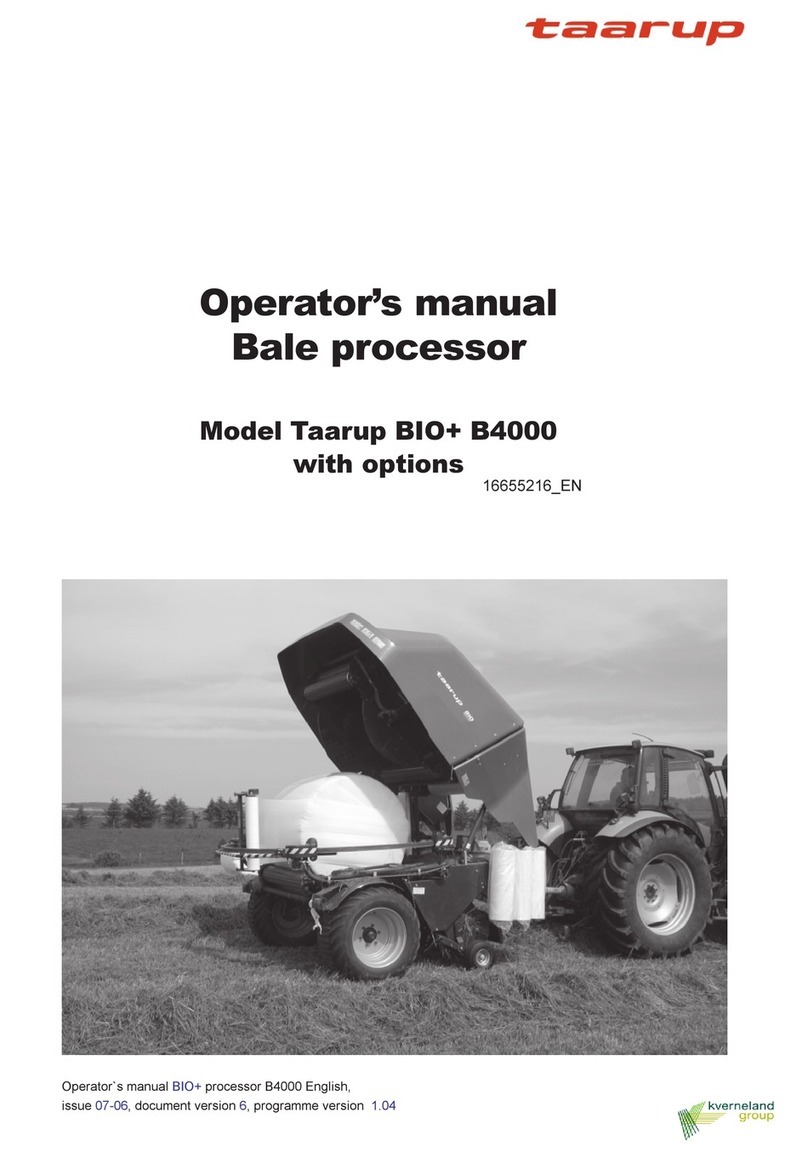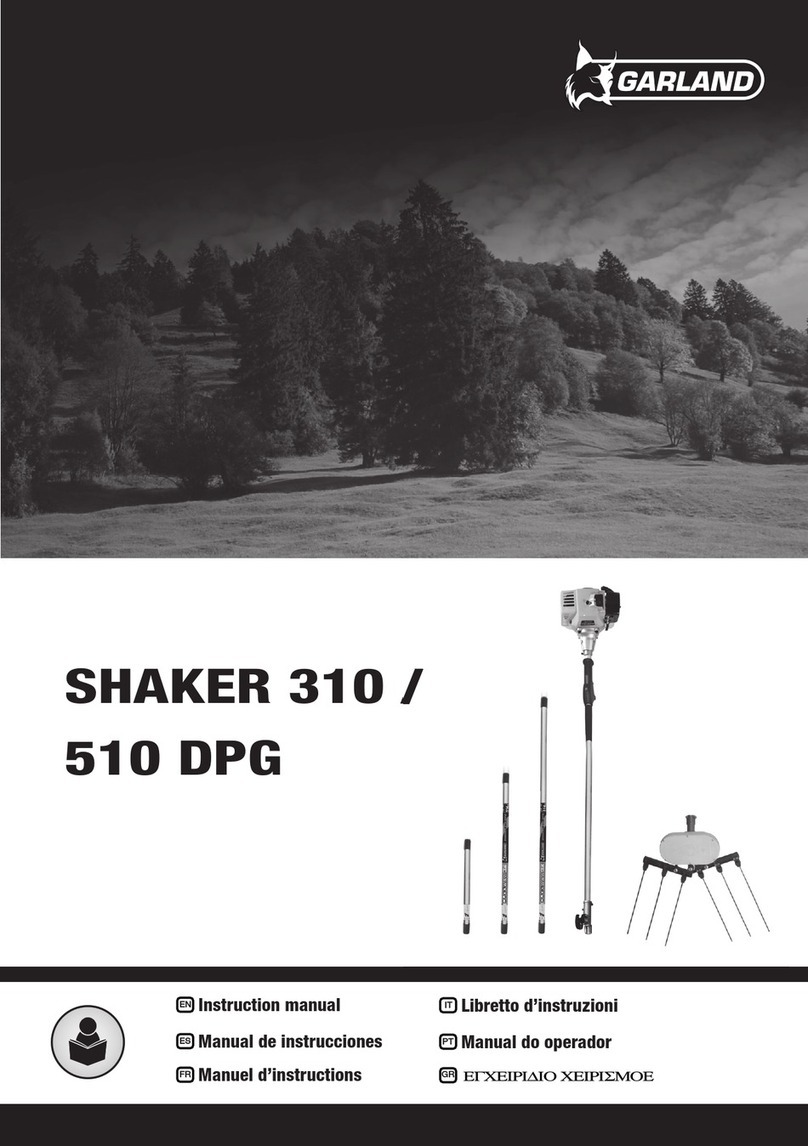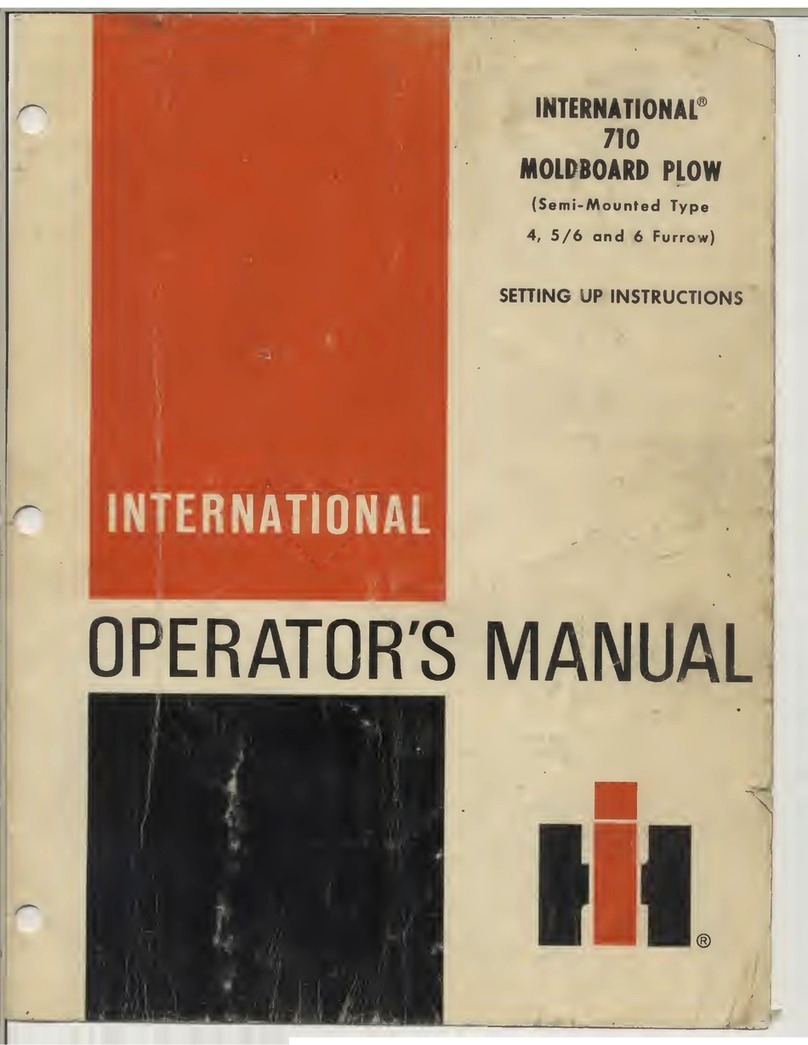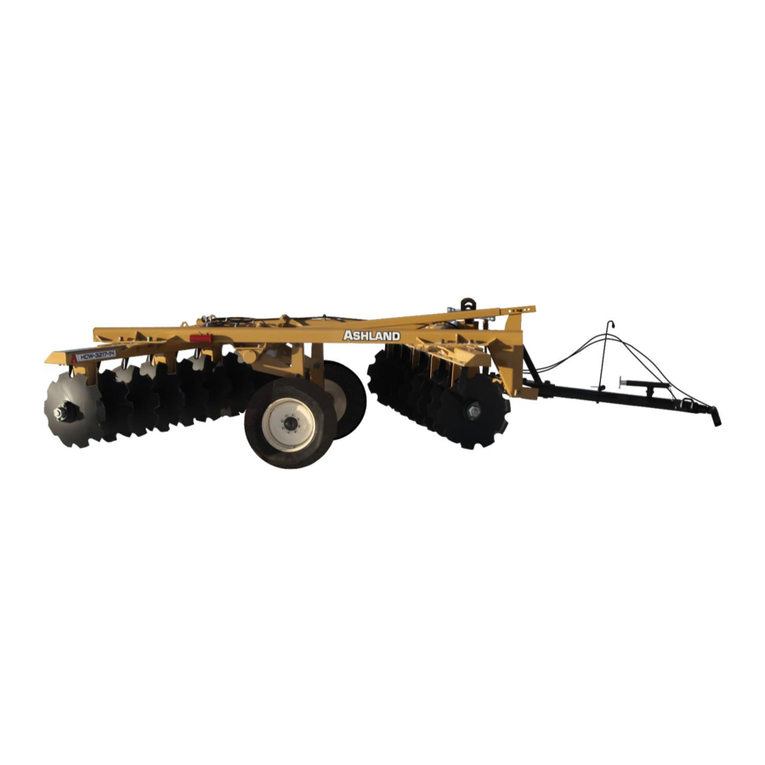
214510 iv Revision A
6.2 Installing Fore-Aft Indicator and Sensor Spring (Parts Bag MD #368002)......................................................... 75
6.3 Connecting Reel to Fore-Aft Cylinders –Single-Reel .................................................................................... 78
6.4 Connecting Reel to Fore-Aft Cylinders –Double-Reel (Parts Bags MD #347593, MD #347580)............................ 83
6.5 Attaching Reel Height Sensor.................................................................................................................. 89
6.6 Installing Reel Fore-Aft Hose Clamps –Double-Reel Headers ........................................................................ 91
6.7 Attaching Cam Arms ............................................................................................................................. 92
6.8 Retrieving Single-Reel Endshields ............................................................................................................ 93
6.8.1 Installing Single-Reel Endshields at Cam End ................................................................................... 100
6.8.2 Installing Single-Reel Endshields at Tail End .................................................................................... 104
6.9 Installing Double-Reel Endshields –Parts Bags MD #340985 (Five-Bat Reels) or MD #340986 (Six-Bat
Reels) ............................................................................................................................................... 109
6.9.1 Installing Double-Reel Endshields at Outboard Cam End ................................................................... 114
6.9.2 Installing Double-Reel Endshields at Inboard Tail End ....................................................................... 120
6.9.3 Installing Double-Reel Endshields at Inboard Cam End ...................................................................... 126
6.9.4 Installing Double-Reel Endshields at Outboard Tail End..................................................................... 132
6.10 Installing Single-Reel Endshields –Parts Bag MD #311363 (Nine-Bat Reel) .................................................. 138
6.10.1 Installing Single-Reel Endshields at Cam End ................................................................................. 139
6.10.2 Installing Single-Reel Endshields at Tail End................................................................................... 146
6.11 Removing and Installing Cutterbar Seal –D215, D220, D225, D230, D235 ................................................... 153
6.12 Removing and Installing Deck Cutterbar Seals –D241.............................................................................. 155
6.13 Crop Dividers ................................................................................................................................... 157
6.13.1 Installing Crop Dividers.............................................................................................................. 157
6.13.2 Installing Crop Divider Rods........................................................................................................ 159
6.14 Setting up Reel Position Sensors –M1 Series Only .................................................................................. 160
6.14.1 Checking and Adjusting Reel Height Sensor................................................................................... 160
6.14.2 Checking and Adjusting Fore-Aft Position Sensor............................................................................ 162
6.15 Installing Options.............................................................................................................................. 165
Chapter 7: Performing Predelivery Checks............................................................................................ 167
7.1 Checking Tire Pressure –Option............................................................................................................ 167
7.2 Checking Wheel Bolt Torque................................................................................................................. 168
7.3 Checking Oil Level in Knife Drive Box ..................................................................................................... 169
7.4 Checking and Adjusting Reel Clearance................................................................................................... 170
7.5 Lubricating Header ............................................................................................................................. 173
7.5.1 Greasing Procedure .................................................................................................................... 173
7.6 Checking and Adjusting Header Float ..................................................................................................... 175
7.7 Checking and Adjusting Draper Tension.................................................................................................. 176
7.8 Checking Draper Seal .......................................................................................................................... 178
7.9 Reel-to-Cutterbar Clearance ................................................................................................................. 181
7.9.1 Measuring Reel Clearance ........................................................................................................... 181
7.9.2 Adjusting Reel-to-Cutterbar Clearance ........................................................................................... 183
7.10 Guard Identification .......................................................................................................................... 186
TABLE OF CONTENTS
